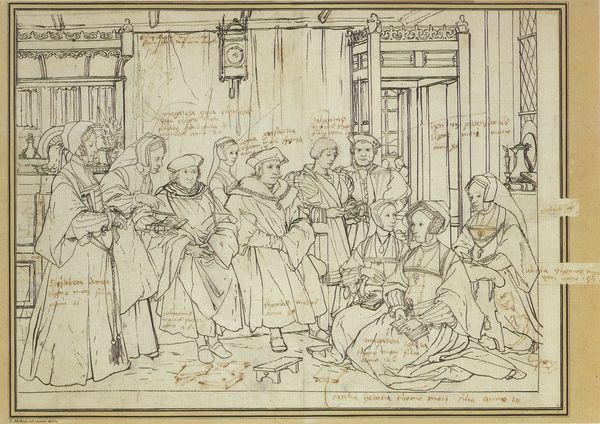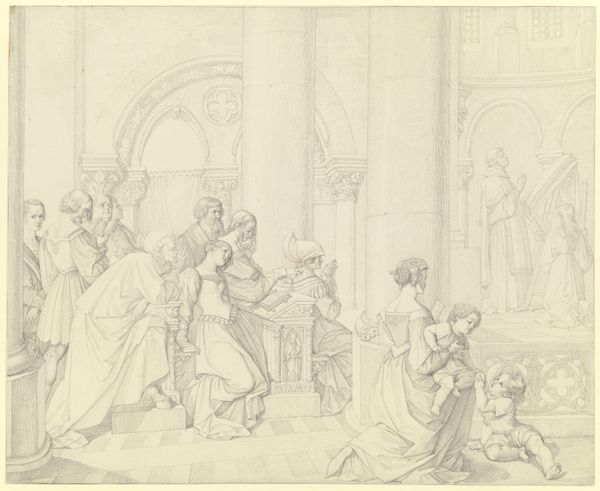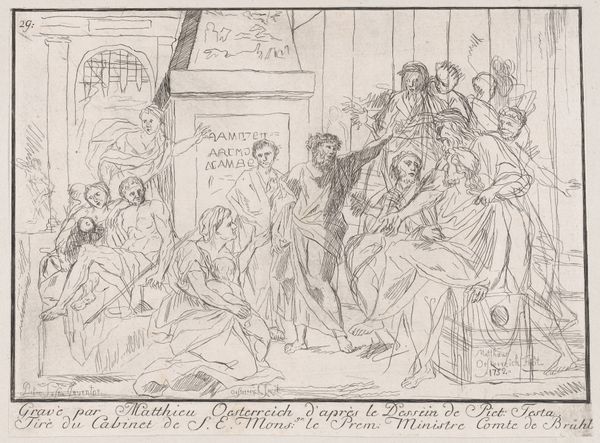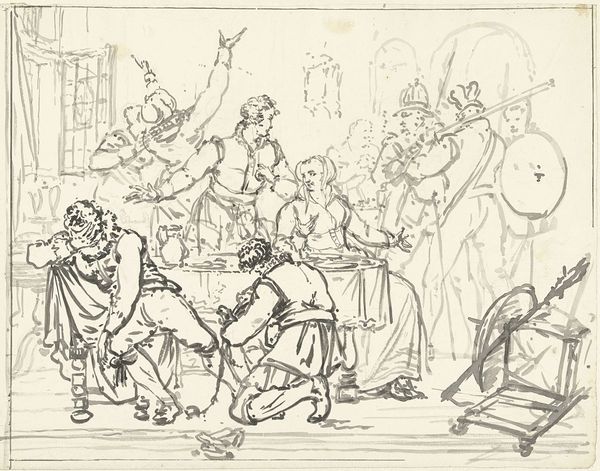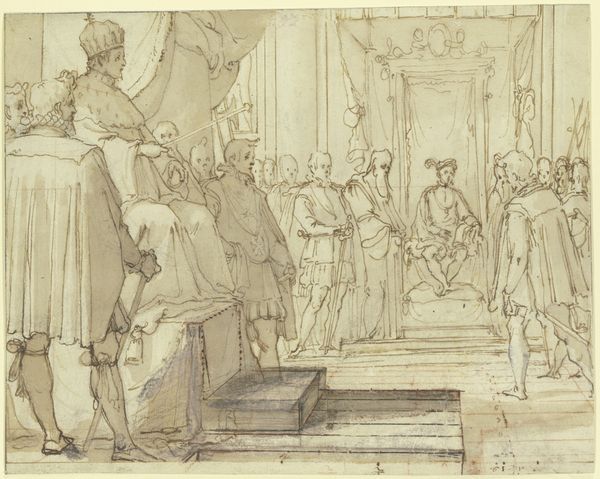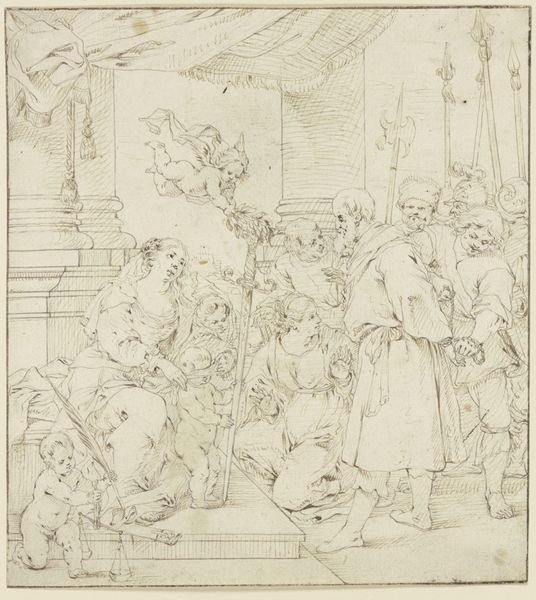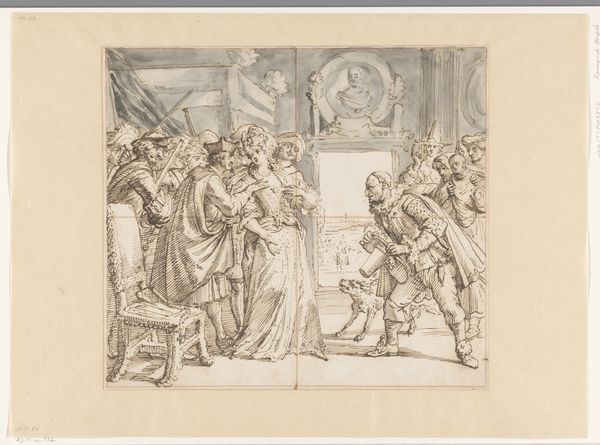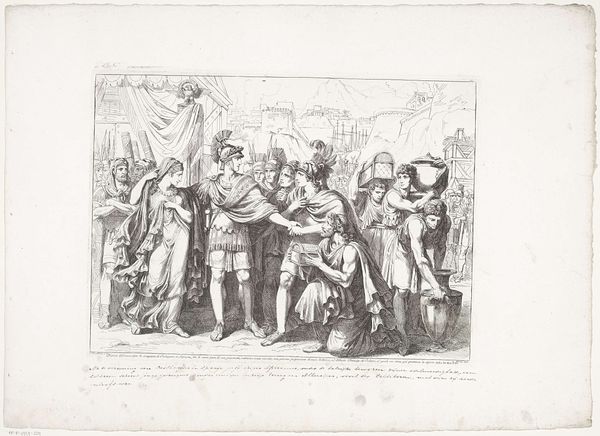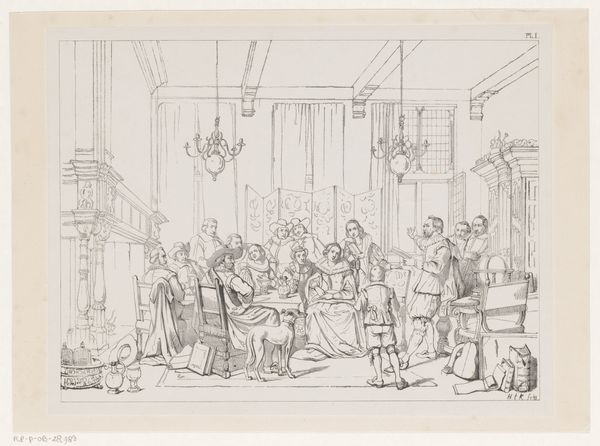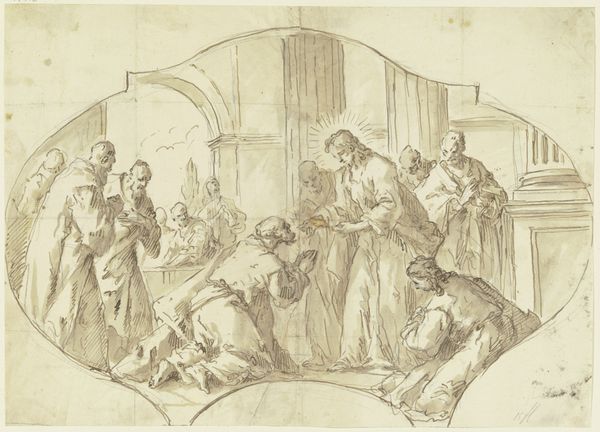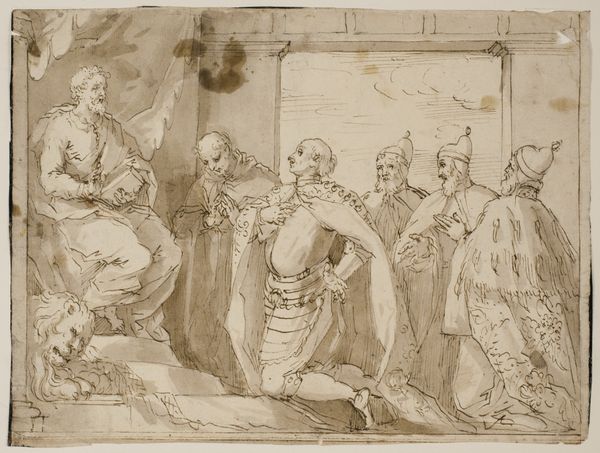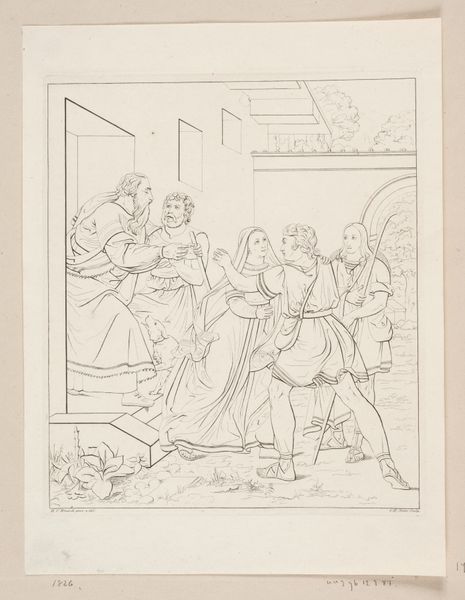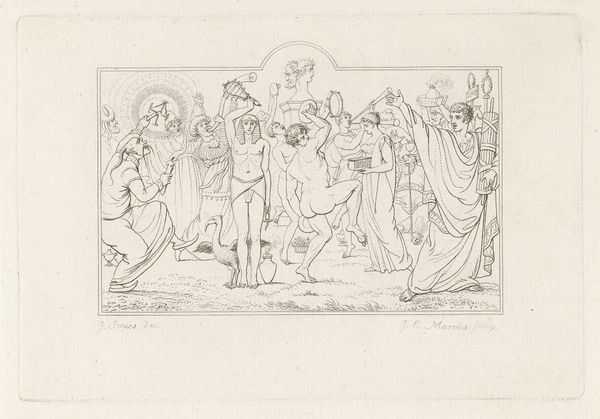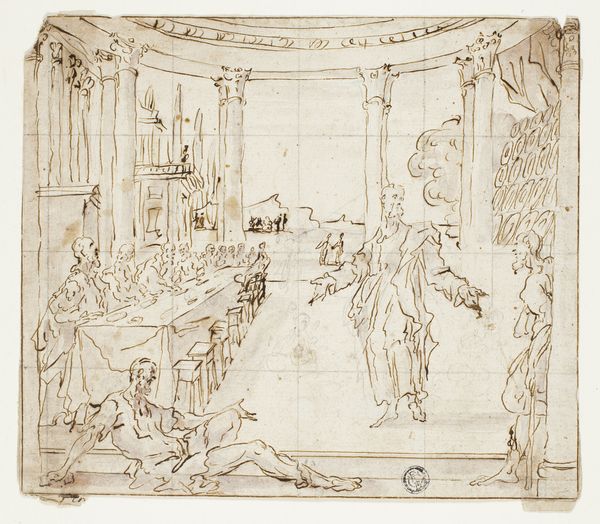
print, pen, engraving
# print
#
pen illustration
#
old engraving style
#
figuration
#
form
#
group-portraits
#
line
#
pen work
#
pen
#
genre-painting
#
history-painting
#
northern-renaissance
#
academic-art
#
engraving
Dimensions: height 315 mm, width 380 mm
Copyright: Rijks Museum: Open Domain
Editor: So, this is "Familieportret met Thomas More," dating sometime between 1620 and 1686. It's an engraving by Nicolas Cochin, currently held at the Rijksmuseum. I’m struck by how meticulously detailed it is; it almost feels like looking at an architectural blueprint of a family. How do you interpret the imagery within this detailed composition? Curator: What I see here is a careful construction of legacy through symbolism. Notice how each figure is carefully placed, almost like actors on a stage, within a detailed domestic scene. The engraving, by copying Holbein's design, acts as a cultural memory. The symbols of wealth and status are important – clothing, interior setting - but so is each individual's contribution to the family name, carefully noted in the inscription below. Have you considered how those inscriptions tie into your reading? Editor: I hadn't focused on the inscriptions, but now that you mention them, I see how they literally ground each figure with an identity and age. It's interesting to think about this not just as a family portrait, but as a conscious effort to define and preserve their image for posterity. Does the style also have a particular significance? Curator: Absolutely. The Northern Renaissance style lends the piece a sense of seriousness and historical weight, connecting the More family to a tradition of intellectual and spiritual pursuits. Even the presence of musical instruments can signal to one the culture of a well-rounded educated household. Does that resonate? Editor: It does. It’s as if every object, every line, is there to communicate a very specific idea about this family and their place in society. Thank you, I see it so much more clearly now, how symbols contribute to this representation. Curator: Indeed, visual symbols speak across time, connecting us to past cultures. The engraving allows us to decode cultural messages and reflect on history itself.
Comments
No comments
Be the first to comment and join the conversation on the ultimate creative platform.
